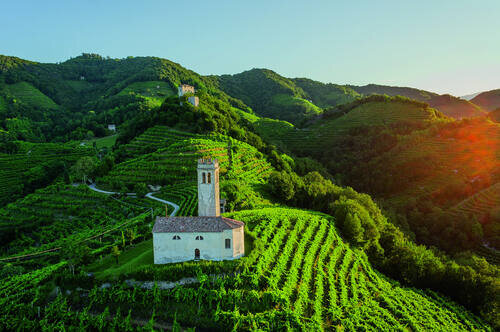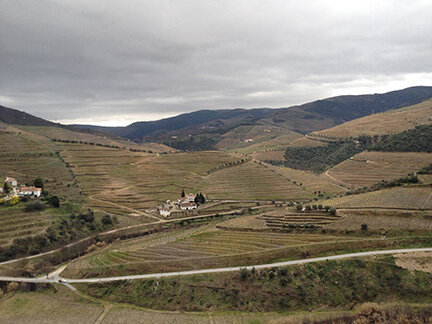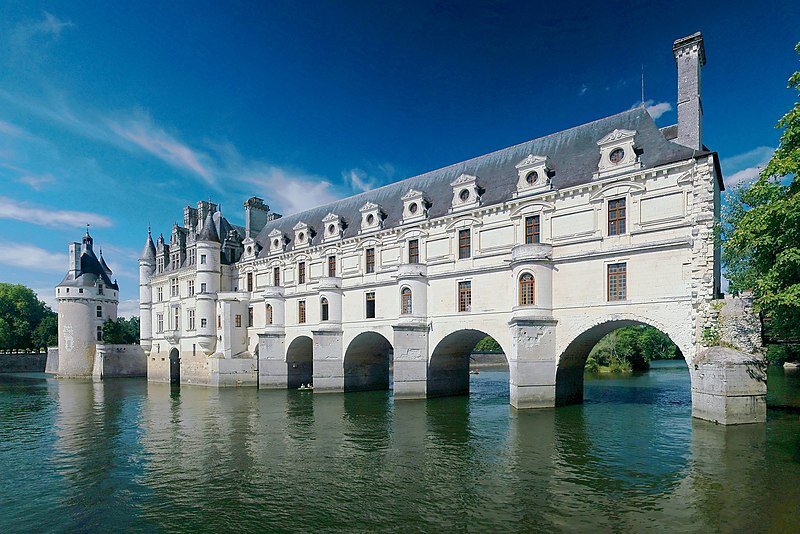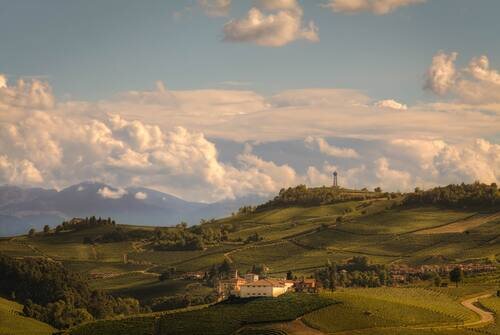UNESCO World Heritage Sites:
Cultural Landscapes of Global Significance
Agave Landscapes of Tequila, Oaxaca, Mexico © Carlo Tomas courtesy UNESCO
UNESCO, the United Nations Educational, Scientific and Cultural Organization, has designated several thousand sites around the world as being of outstanding significance to mankind and the natural world we share. Of these, 114 are designated Cultural Landscapes, These combined works of nature and humankind, they express a long and intimate relationship between peoples and their natural environment. As of 2021, there are twelve Cultural Landscapes recognized for their expression of the long presence of viticulture and winemaking as a key example of culture evolving in cooperation with the natural environment.
Wachau Cultural Landscape © Jakob Hürner, courtesy UNESCO
Burgundy, France
The landscape of Burgundy has been one of vines since the monastic expansions of the High Middle Ages. Burgundy today is synonymous with great wines, and is the standard-bearer for Chardonnay Pinot Noir worldwide, both of which originated in this sliver of a region in east-central France. Terroir is proud to represent the wines of Albert Ponnelle, a biodynamic grower with holdings throughout the Cote d’Or.
Mustard fields and vineyards in Champagne © Gordon Alexander
Loire Valley, France
A charming valley replate with castles, palaces. and gardens, the Loire was also one. of the main routes inland used by the Vikings in the early Middle Ages. First planted by the Romans, and today famed for its whites of Melon (Muscadet) Chenin Blanc and Sauvignon Blanc, and its reds of Cabernet Franc and Pinot Noir the valley has been a prime supplier to the wine cellars of Paris and the Royal Court for centuries. Terroir Wines represents a full half dozen producers within the valley, including producers of Muscadet, Sancerre and Quarts de Chaume.
The Village of Saint Emilion, courtesy Wikipedia Commons
The Middle-Rhine, Germany
This 40-mile stretch of the Rhine, positively dripping with charming villages and clifftop castles, is among the most romantic landscapes in Europe. The Romans introduced the vine to the Rhine (and Mosel) valleys, and wine has been integral to the cultural development of both valleys, and indeed, southern Germany.
The cellars of Gombos-hegyi Pincesor in Tokaj Hegyalja © György Darabos, courtesy World Heritage Journeys
Piedmont, italy
Winemaking in the Italian Piedmont predates the Roman Empire by a full five centuries. Today the landscape is a stunning tapestry of hills, vineyards, orchards, and baronial holdings surrounded by medieval villages. The district is home to some of Italy’s greatest wines, and to one of Italy’s richest culinary traditions. Terroir works with Bonfante & Chiarle, a storied, century-old producer producing a range of fine whites, a rose and a selection of reds.
Prosecco: © Consorzio Tutela del Vino Conegliano courtesy UNESCO
the azores, portugal
The Azores, a group of volcanic peaks midway between Europe and the Americas, were critical to Portugal’s transatlantic trade for centuries. The wine culture that evolved there is unique in the world, and the landscape of protective stone walls, terraces and smallholdings dates back over 500 years.
The Upper Douro Valley © Gordon Alexander
Lavaux, Switzerland
A thousand-year-old cultural landscape defined by monastic plantings, the hillsides above Lake Geneva are a tapestry of terraced vineyards and tiny villages. The area’s beauty is only outdone by its economic significance - viticulture has been a mainstay of the locak economy for at least ten centuries.
The Wachau, Austria
Cultivated since the Neolithic, the current cultural pattern of villages, vineyards and orchards dates to the early Middle Ages. Terroir represents two significant Austrian wineries, Hermann Moser and the Stift-Kosterneuberg, the oldest winery in Austria.
Chambolle Musigny © Michel Joly, courtesy UNESCO
Champagne, France
First planted by the Romans who carved some of the regions cellars out of the chalk bedrock, the district is today famed for its sparkling wines, the true Champagne by which all other sparkling wine is judged. Terroir Wines represents three superb recoltant-manipulants, that is, individual growers who own their own vines and produce their wines by hand in their own cellars.
Chateau de Chenonceau © Ra-Smit, courtesy Wikipedia Commons
Saint emilion, france
First planted by the Romans in the second century BC, the region developed into a major wine center in the Middle Ages, long before dutch engineers drained the swamps that would become. the Medoc. The hillside vineards underlain by cool, clay-based soils are ideal for the indigenous Merlot grape, which defines the style of these great wines. Terroir Wines represents two Grand Crus of Saint Emilion. both sterling examples of the winemaker’s art.
The Mittel-Rhein, courtesy pixabay.com
tokaji, hungary
Referred to by Louis XIV as the wine of kings and the king of wines, Hungary’s Tokaji dessert wines have been famed from London to Saint Petersburg for centuries. Terroir Wines represents several producers in this unique district, making a range of both sweet an dry wines.
The Italian Piedmon Valerio Li Vigni courtesy UNESCO
Prosecco, Italy
A region characterized by vineyards draped over steep hillsides, the hills of Conegliano-Valdobbiadene are unique and distinct from the flatland vineyards below that produce mass-market Prosecco. Terroir Wines is honored to represent Trevisiol, one of the finest producers of these handcrafted sparkling wines.
Pico Island, the Azores © Fotopico, courtesy UNESCO
The Douro River Valley, Portugal
Today synonymous with Port, the fortified wine made here originally for the British navy and merchant marine, The upper Douro has been producing wines for over two thousand years. Terroir is pleased to offer Gateway Douro, a red wine made from the region’s indigenous grape varietals.
Lavaux, Vineyard Terraces © www.diapo.ch Courtesy UNESCO













